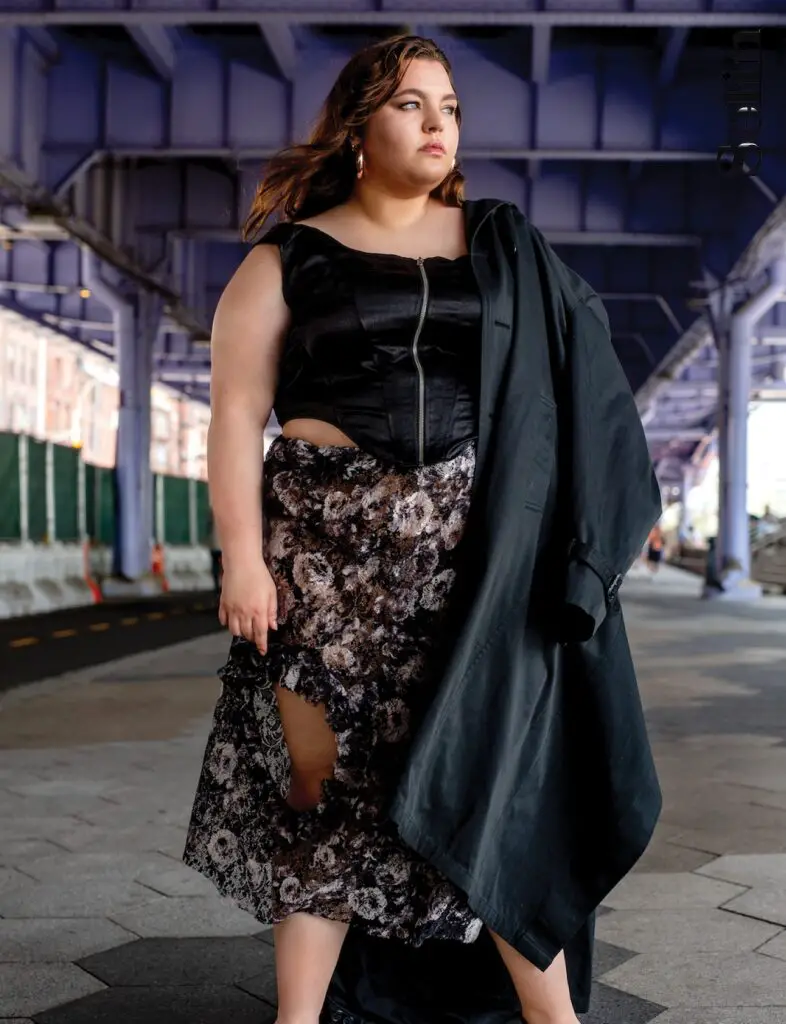By way of visitor author, Victoria Pousada
Rising up, I by no means noticed any individual who gave the impression of me within the pages of favor magazines or on runways. I’m a queer, neurodiverse, petite-plus, hispanic type. That sentence on my own holds such a lot of identities that, traditionally, the fad international has marginalized, overlooked, or tokenized. My adventure into style has now not been conventional—it’s been emotional, political, and deeply non-public. However greater than the rest, it has proven me the transformative energy of being observed and the way essential intersectional illustration is.
I bear in mind being a tender lady, hoping for, on the lookout for any individual whose frame, tradition, or essence reflected my very own within the presentations I watched, the ads that got here on, and the billboards I noticed. It used to be a fruitless seek. The best type used to be at all times tall, skinny, and conventionally female. The rest outdoor of that used to be thought to be area of interest or, worse, invisible. It planted seeds of self-doubt and confusion in me, as though I needed to contort myself into any individual else’s imaginative and prescient of good looks to be worthy. However deep down, I knew that wasn’t the reality. And I refused to spend my lifestyles erasing myself.
After I first began modeling, I walked into rooms the place I used to be the one plus dimension particular person and the one one in every of moderate peak. I may really feel the discomfort within the room once I offered myself with self belief and refused to make an apology for taking over area. Or, the loss of acknowledgement in any respect. I wasn’t simply asking to be integrated—I used to be asking to be valued for who I’m.
There were moments of triumph. Strolling in London Style Week as a petite-plus type used to be a dream that I by no means concept imaginable. Seeing myself featured in publications that when felt like gated communities jogged my memory that modify is imaginable, despite the fact that it’s gradual and imperfect. And when different queer, neurodivergent, or petite-plus other folks message me to mention, “I’ve by no means observed any individual like me doing this,” I bear in mind why I stay going. Intersectional illustration isn’t about vainness—it’s about validation, empowerment, and reality.
Nevertheless it hasn’t all been runway lighting and editorials. There’s a continuing emotional toll in navigating an business that also clings tightly to inflexible good looks requirements. I’ve been instructed I’m “an excessive amount of” and “now not sufficient” in the similar breath. Too curvy. Too brief. Too outspoken. Too outspoken. The message used to be at all times: be much less of your self, and possibly then you definitely’ll are compatible in.

However intersectionality has taught me that my energy lies in being extra of myself, now not much less. Each layer of my identification brings with it a point of view that the business desperately wishes. My queerness is helping me perceive gender fluidity in style. My neurodivergence brings creativity, empathy, and element to my paintings. My numerous background connects me to a wealthy cultural heritage of colour, rhythm, and resilience. My petite-curve frame tells the reality in regards to the spectrum of good looks that exists past dimension charts.
There’s Extra to Intersectional Illustration than You Might Assume
Intersectional illustration in style isn’t almost about checking bins or variety optics. It’s about transferring the narrative in order that other folks like me, and who aren’t like me, aren’t an exception—we’re a part of the norm. It’s about growing areas the place fashions don’t have to select which a part of their identification to spotlight and which to cover. It’s about acknowledging that style, at its core, is a mirrored image of who we’re and who we dream of changing into.
And frame inclusivity is a extra intersectional topic than other folks understand, since the good looks same old of thinness is at once associated with Ecu good looks requirements. To be skinny is to be gorgeous, and to be skinny is to be white. Those destructive notions have plagued style for a ways too lengthy. And mockingly, the Ecu good looks same old hurts Ecu other folks with brief and plus dimension our bodies. So this antiquated perception doesn’t even completely assist its creators and unique benefactors. It solidifies that unique ethno-corporal practices receive advantages nobody.

I dream of a manner business the place runways seem like actual sidewalks, the place the spectrum of identities is well known, now not simply tolerated. The place being queer doesn’t imply being typecast. The place being Hispanic doesn’t require an accessory or stereotype. The place neurodivergence isn’t handled like a flaw however known as a novel approach of seeing and interacting with the sector. The place being petite-plus doesn’t imply being an anomaly, however merely every other size of good looks.
Being observed isn’t about being well-known. It’s about being understood. It’s about status on a suite or in a becoming room and realizing you don’t have to give an explanation for your self, shrink your self, or break up your self in two. It’s about having your entire tale honoured.
I’ve realized that my frame, my voice, my thoughts—all of them deserve area on this business. No longer simply because I struggle for it, however as a result of they have got worth in and of themselves. And if via appearing up totally I lend a hand any individual else really feel observed, then each problem has been price it.
The craze business nonetheless has a protracted strategy to cross. However intersectional illustration isn’t a development—it’s a need. Since the second any individual sees themselves mirrored, they start to imagine in their very own energy.
And that trust? That’s the place actual good looks starts.
Did you be informed one thing new about intersectional illustration? Tell us within the feedback.



